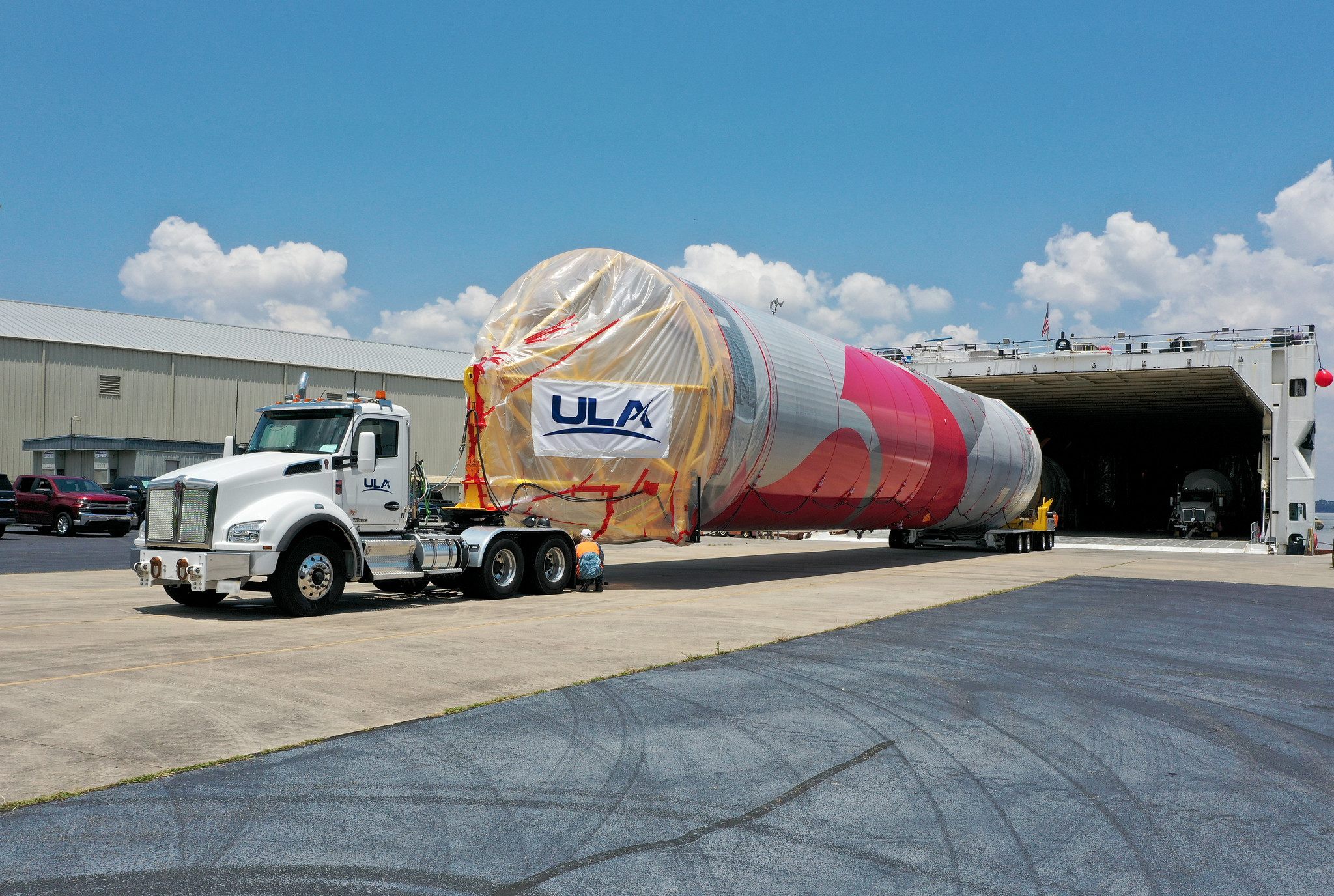WASHINGTON — United Launch Alliance will fly an inert payload and instrumentation on its second Vulcan Centaur mission after concluding that Sierra Space’s Dream Chaser would not be ready in time for a launch this fall.
At a June 26 media briefing, Tory Bruno, chief executive of ULA, said that the upcoming Cert-2 mission, now scheduled for September, will carry an inert payload the company originally built as a backup in case the payload for the first Vulcan launch, Astrobotic’s Peregrine lunar lander, suffered delays. It will take the place of Dream Chaser, a cargo spaceplane that was to make its first flight to the International Space Station.
“We have been informed by Sierra Space that they feel that they have significant risk towards making the mid-year flight date” previously planned for Cert-2, he said. “They told us they will step aside in order to support our critical national security space missions that will come afterwards.”
ULA is impatient to launch Cert-2 because it is the second of two launches needed for the Space Force to certify the rocket for launching national security payloads. The company says it wants to launch two of those missions, designated USSF-106 and USSF-87, before the end of the year.
The company’s new plan calls for launching Cert-2 in September carrying that inert payload into low Earth orbit. The payload will remain attached to the upper stage while ULA conducts “experiments and demonstrations” of technologies the company is considering incorporating into the Centaur, details of which Bruno did not disclose.
“Then we’ll conduct some maneuvers post the basic mission just to help us better understand the full capabilities of the Centaur V and to measure some of its attributes,” he said, such as boiloff of its cryogenic propellants. The Centaur will then go to a final disposal orbit that he said complies with the U.S. government’s Orbital Debris Mitigation Standard Practices.
The new plan for Cert-2 matches what Pentagon officials said in May, when they privately commented that they would consider allowing ULA to launch an inert payload if Dream Chaser was not ready to fly by the end of the year. Bruno said on the call that there were no other commercial payloads available to take the place of Dream Chaser and maintain a September launch.
Bruno did not estimate how long he thought certification would take, but believed it could be done in time to allow ULA to perform the two Space Force missions before the end of the year. That’s because of the Space Force has had time to review the data from the Cert-1 launch in January and preparations being done in advance of Cert-2.
“It’s sort of pre-staged and ready to go,” he said of the certification paperwork. ULA will deliver data and analysis from Cert-2 to the Space Force to allow it quickly compare actual with expected performance. “It will turn pretty quickly, in plenty of time to fly two more times this year.”
Hardware for both the Cert-2 launch and the two Space Force missions that follow are either ready or nearing completion. ULA delivered the Vulcan for Cert-2 to Cape Canaveral on the company’s Rocketship boat that arrived June 23. The next two will arrive at the Cape in August and “right after that,” Bruno said.
He added that ULA has received all of the BE-4 engines from Blue Origin that it needs for the Vulcans it plans to launch this year. “Blue has been the long pole previously because it took them just a little bit longer to get this new, methane-based, very large rocket motor through development, but it is through and they are ramping up their factory right now,” he said.
That has included, he said, personal assurances from Dave Limp, chief executive of Blue Origin, that the company will be able to meet ULA’s needs for BE-4 engines while also producing a version of the engine for its own New Glenn rocket. “I have a great deal more confidence in Blue’s ability to meet our needs,” he said, compared to “many months ago or a year ago.”
ULA’s decision will create an indefinite delay for Dream Chaser. Sierra Space delivered the first Dream Chaser vehicle, named Tenacity, to the Kennedy Space Center in May for final testing as well as work on its thermal protection system. The vehicle arrived at KSC from NASA’s Neil Armstrong Test Facility in Ohio after a series of shock, vibration and thermal vacuum tests there.
“As a defense-tech prime, we understand how important ULA’s Cert-2 mission is to the criticality of national security and our launch partner’s schedule. We are working closely with ULA to identify the next available launch date,” Sierra Space said in a statement to SpaceNews. It added the company was making “excellent progress” on the vehicle, which is “on track to fly by the end of 2024.”
However, launch manifests may push the mission well into 2025. With Vulcan booked for two national security missions by the end of the year, the next Vulcan launch is planned for late in the first quarter of 2025, although Bruno did not disclose the payload for that mission.
ULA, which has conducted three launches so far this year, is projecting 20 launches in 2025, a combination of Atlas and Vulcan vehicles. All the Atlases will be ready by the end of the year while the Vulcans will be “ahead of need” for the missions planned next year, Bruno said. “All I’ll need, knock on wood, is for the spacecraft to show up on time.”
Related
Read the original article here
